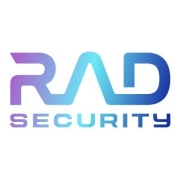Identity Threat Detection and Response (ITDR) solutions focus on protecting user identities from threats by providing comprehensive monitoring, alerting, and response capabilities.
ITDR enhances security measures by identifying and mitigating threats that target user identities within organizations. By integrating with existing systems, these solutions monitor user behavior, detect anomalies, and provide actionable insights to prevent unauthorized access.
What features should you look for in ITDR solutions?In industries like finance and healthcare, ITDR solutions are applied to safeguard sensitive customer information, ensuring compliance with regulatory standards such as GDPR and HIPAA. Organizations in these sectors rely on ITDR to prevent data breaches that could lead to severe financial and reputational damages.
Identity Threat Detection and Response is essential for organizations aiming to protect against identity-based breaches. By offering comprehensive monitoring and response mechanisms, ITDR plays a crucial role in maintaining security and trust.
| Product | Market Share (%) |
|---|---|
| CrowdStrike Falcon | 15.6% |
| Microsoft Defender for Identity | 14.6% |
| Microsoft Entra ID Protection | 11.2% |
| Other | 58.6% |

















































ITDR solutions use behavioral analytics and machine learning algorithms to identify unusual patterns that may indicate potential insider threats. By continuously monitoring user activity and access privileges, ITDR solutions can alert you to any deviations from typical behavior, allowing for quick response to prevent data breaches and unauthorized access. These solutions can also enforce strict access controls, ensuring that sensitive data is only available to authorized personnel.
What role do advanced analytics play in ITDR?Advanced analytics is crucial in ITDR by enabling the detection of subtle anomalies and threats that might go unnoticed by traditional security tools. By employing machine learning and AI, ITDR solutions can analyze vast amounts of data in real-time, identifying patterns and trends that indicate potential threats. This proactive approach allows you to respond to threats swiftly and accurately, enhancing overall security posture.
Why is continuous monitoring essential in ITDR?Continuous monitoring allows ITDR solutions to provide ongoing protection against identity-based threats. By maintaining real-time oversight of user activities and identities, ITDR can detect and respond to threats promptly. This constant vigilance is essential in identifying unauthorized access, compromised accounts, or policy violations, ensuring that your organization's sensitive information remains protected around the clock.
How can ITDR integrate with existing security infrastructure?ITDR solutions are designed to complement and enhance existing security measures, integrating seamlessly with SIEM systems, firewalls, and IAM platforms. They can provide additional layers of protection by supplying enriched identity threat intelligence and automating response actions. This integration allows you to leverage your current infrastructure while improving your ability to detect and respond to identity-related threats effectively.
What are the key features to look for in an ITDR solution?When evaluating ITDR solutions, look for features like real-time monitoring, advanced analytics, behavioral analysis, and automated response capabilities. These features help ensure that potential threats are swiftly identified and addressed. Scalability, ease of integration with existing systems, and customizable alerting mechanisms are also important factors, enabling you to tailor the solution to meet your organization's specific needs.